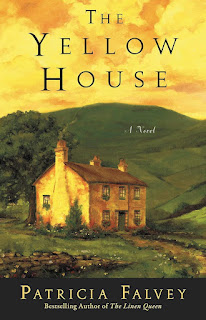The Yellow House - Patricia Falvey
The emphasis is certainly however on the suffering of decent, hard-working poor oppressed Catholics, represented here by Eileen O’Neill, a young woman who has seen her mother and father and their glorious Yellow House in Glenlea, Co. Armagh fall victim to the prejudice and hatred of a bigoted Protestant population, everyone of them hard, dour and authoritarian, acting out of bitterness and fear of what Home Rule might bring. Eileen has to grow up quick, finding herself work in a local mill in order to look after herself and her younger brother, but events lead Eileen to take up arms in the struggle against an unjust society ruled by Protestants who keep the Catholics in their place as second-class citizens.
Almost inevitably, the struggle is characterised in romantic as well as political terms, Eileen, even as she joins the Irish Volunteers, finding her feelings torn between the handsome mill owner’s son Owen Sheridan, who has returned from the Great War believing that violence isn’t the answer, and James Conlon, a fervent follower of Michael Collins, who appeals to the rebellious side of the young woman’s nature and her pride in her heritage. In this context, Eileen’s determination to restore the Yellow House of her happy childhood and reunite her broken family becomes a personal aspiration that drives her onward, as well as being a strong metaphor for the past that has been lost and which may never again be fully restored to the way it was.
One could question the point of bringing up the bitter history of an old conflict that should no longer be relevant in a new progressive and peaceful modern-day Ulster that has moved on considerably from the old ways. While the characters depicted here are recognisably those of previous generations in the north of Ireland however, you don’t have to look too deeply at the current generation and the politicians who represent them to see that the same attitudes, prejudices and fears remain just below the surface of outward respectability. It’s admirable then that Patricia Falvey doesn’t feel the need to present a balanced, politically correct, revisionist view of the past, and The Yellow House is all the more readable for it.
As highly-dramatic and as one-sided as the storyline might be towards Nationalist aspirations, there is nevertheless a definite authenticity to the historical setting, to the characterisation of the people of Ulster - both Protestant and Catholic - with a good ear for local turns of phrase and the attitudes that lie beneath them. This strong characterisation and the mostly authentic dialogue (not so sure about the unrealistic over-use of the Father Ted 'feck') succeeds in bringing the past to life with a good balance between romance, local colour and historical drama.




Comments
Post a Comment